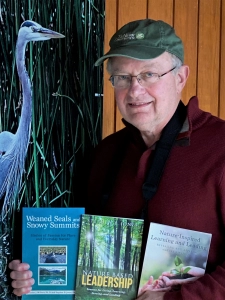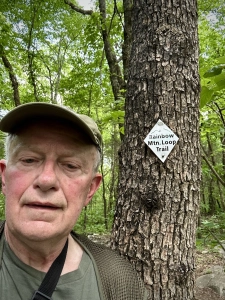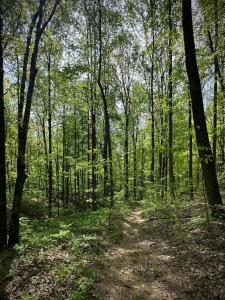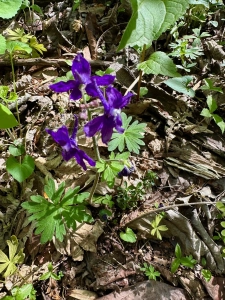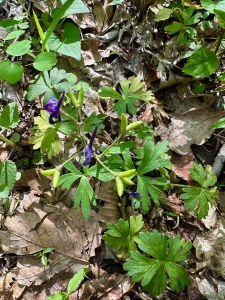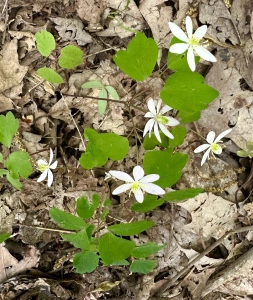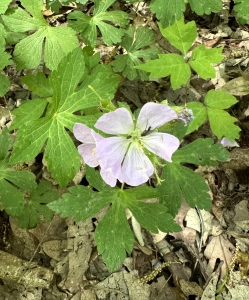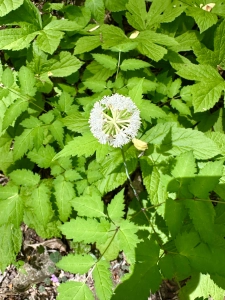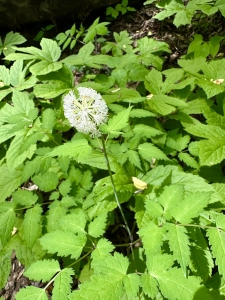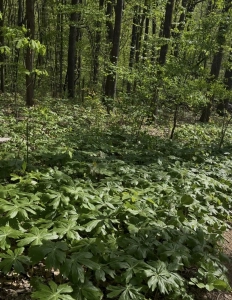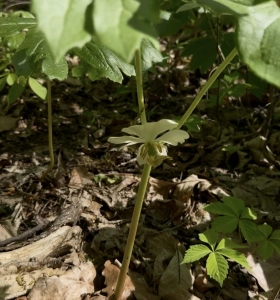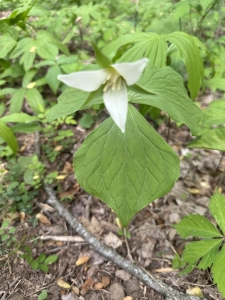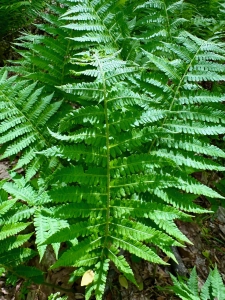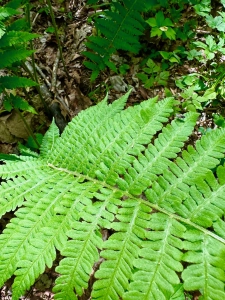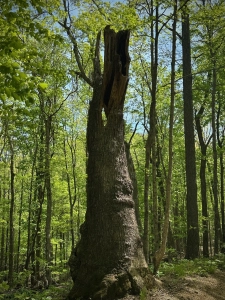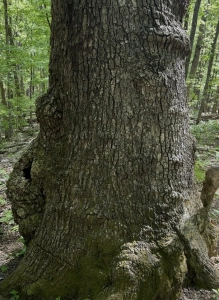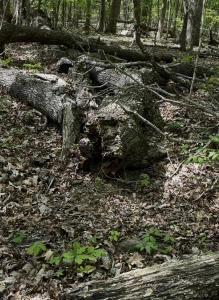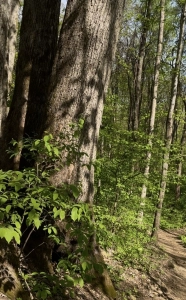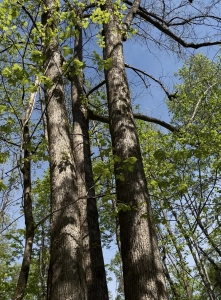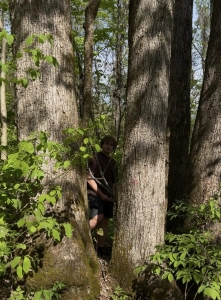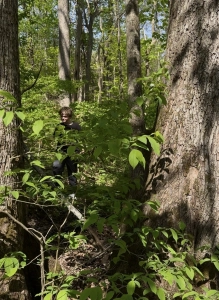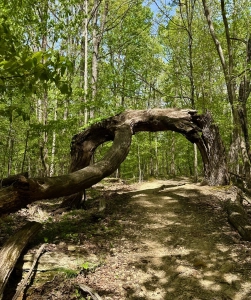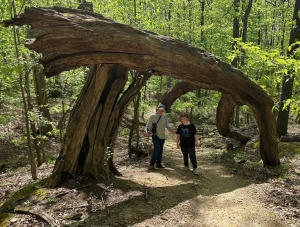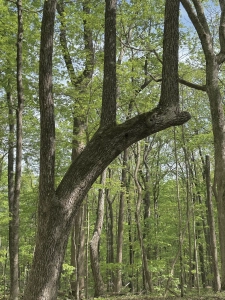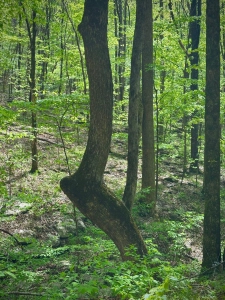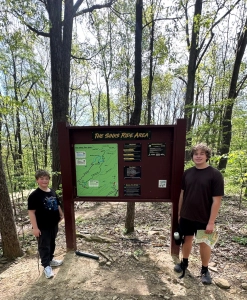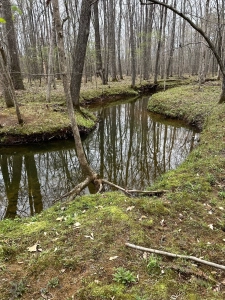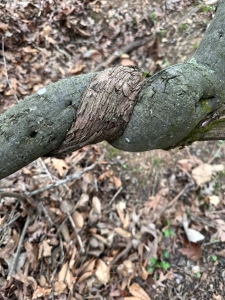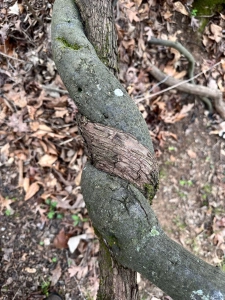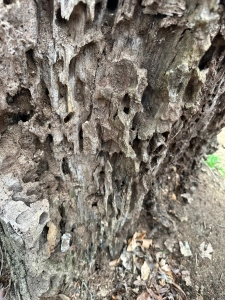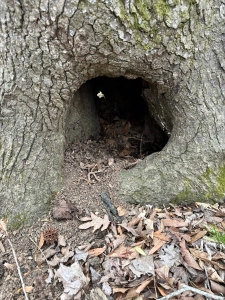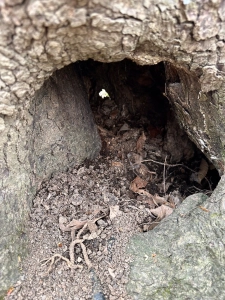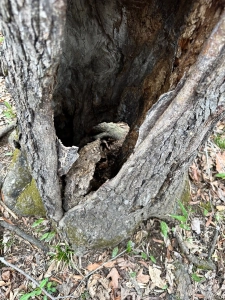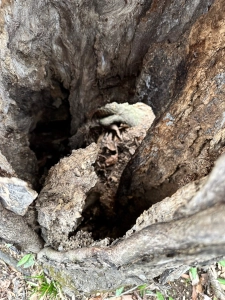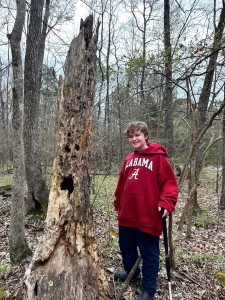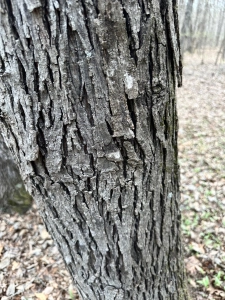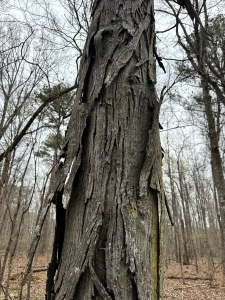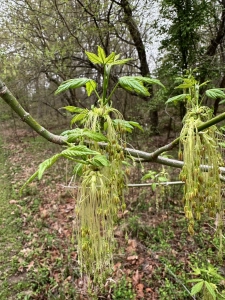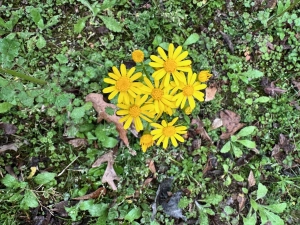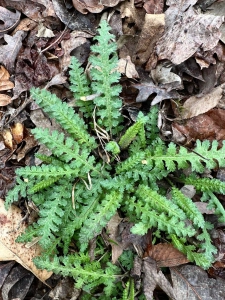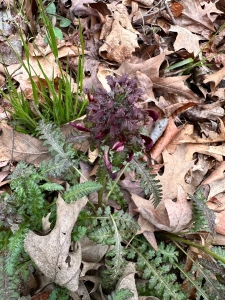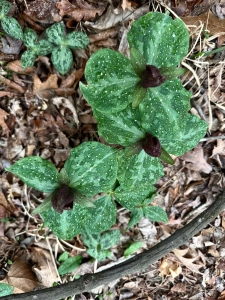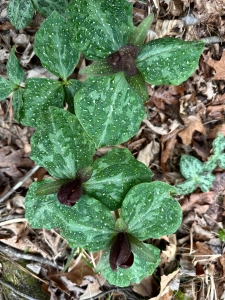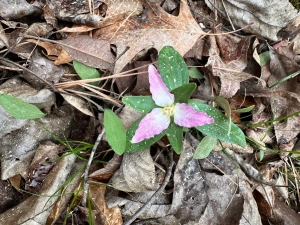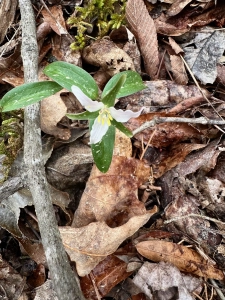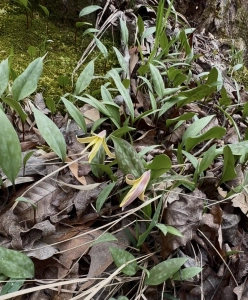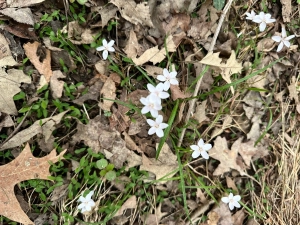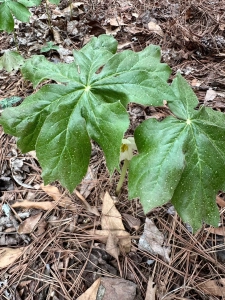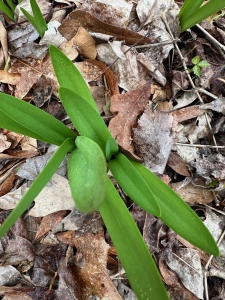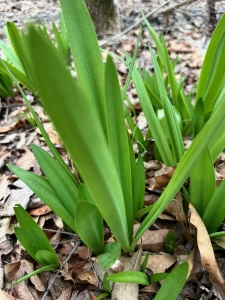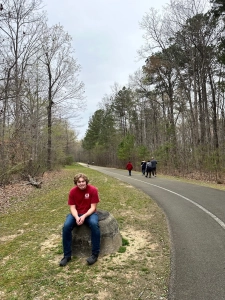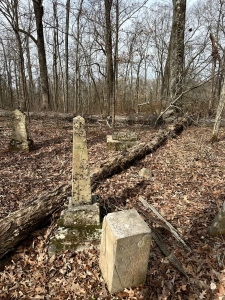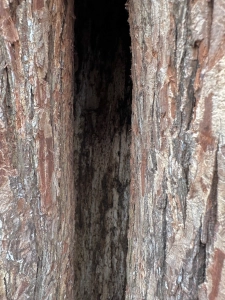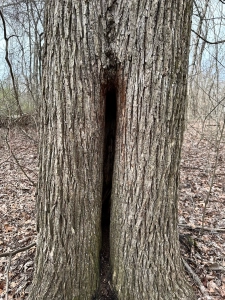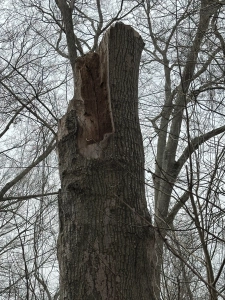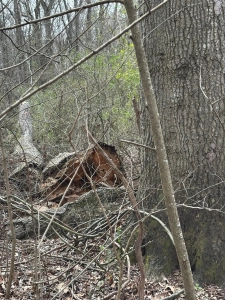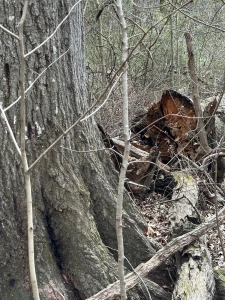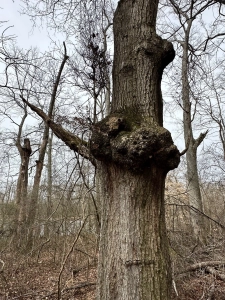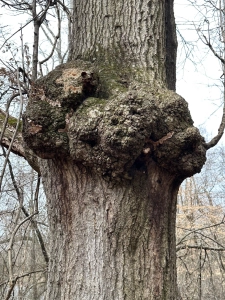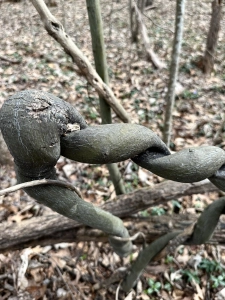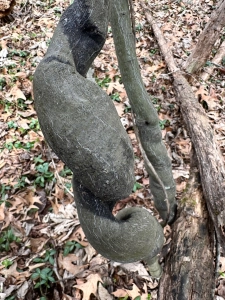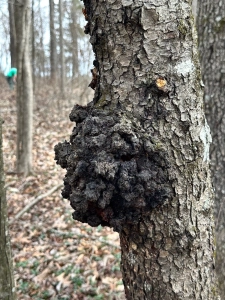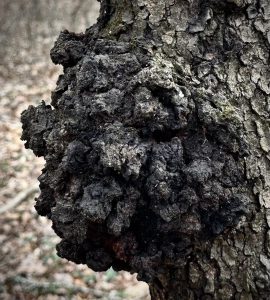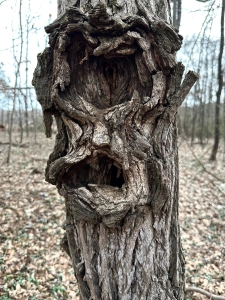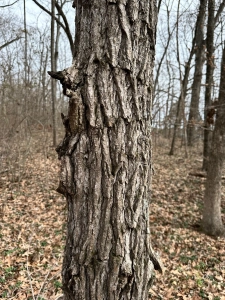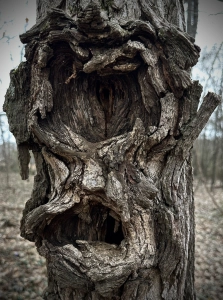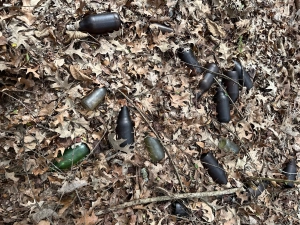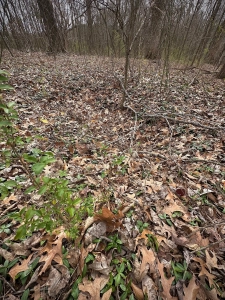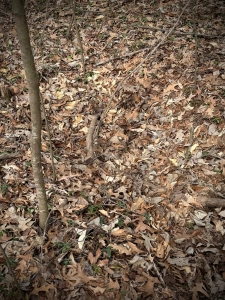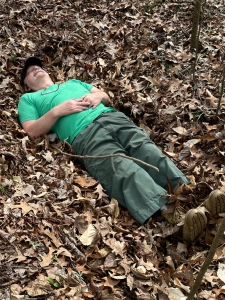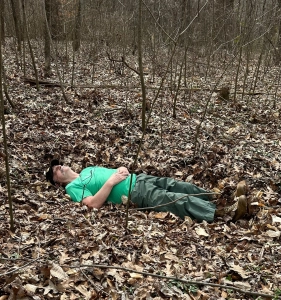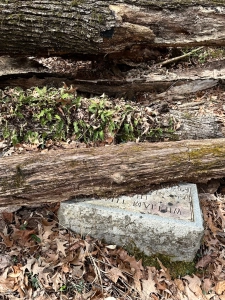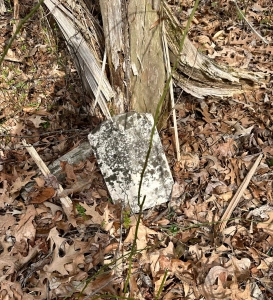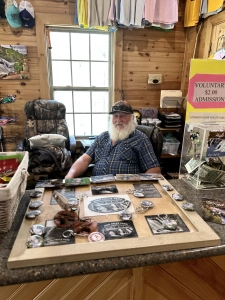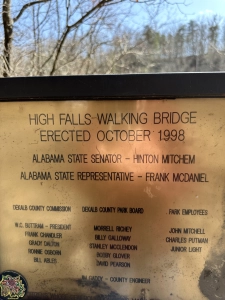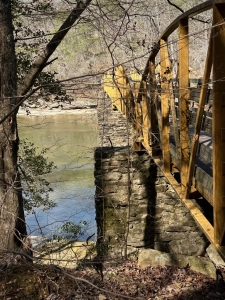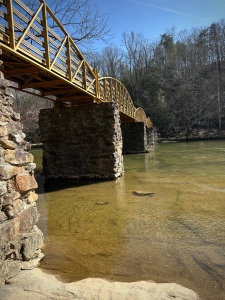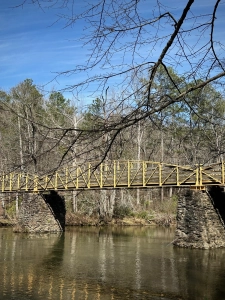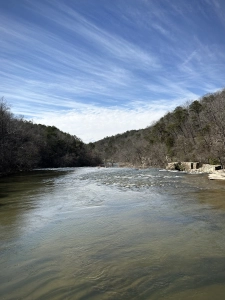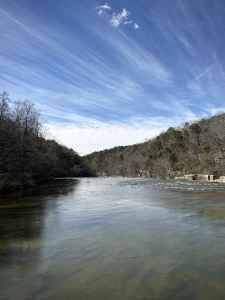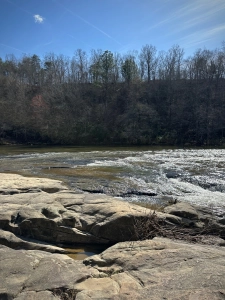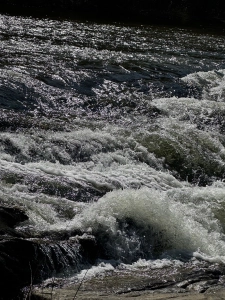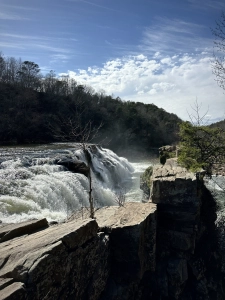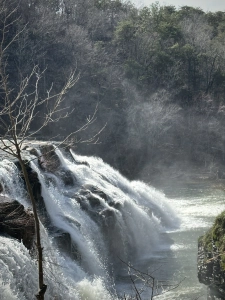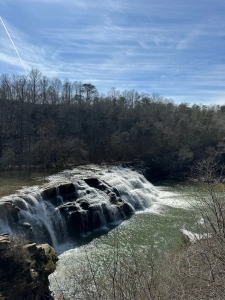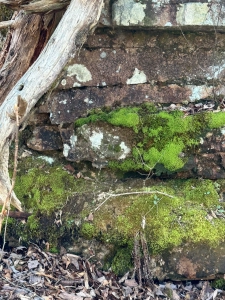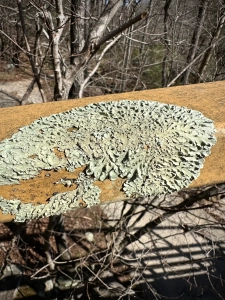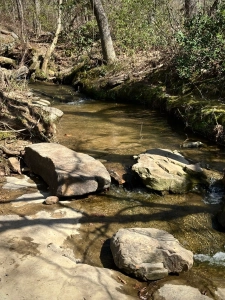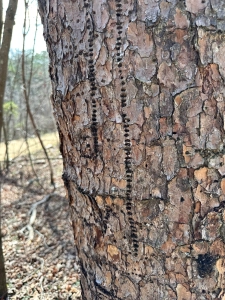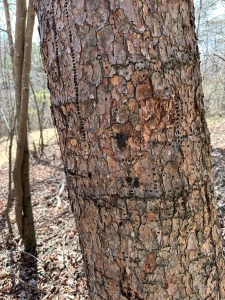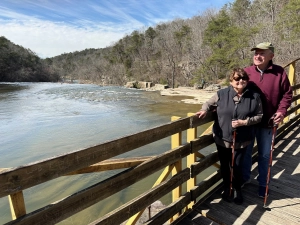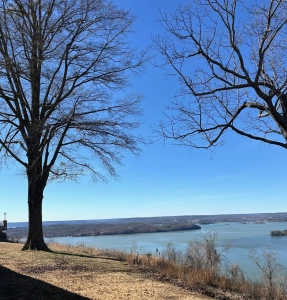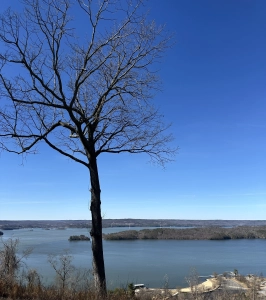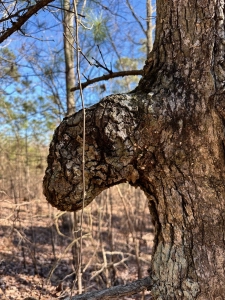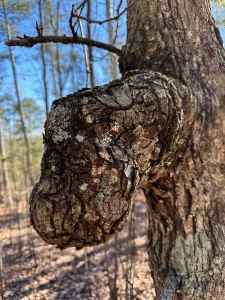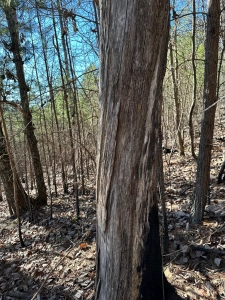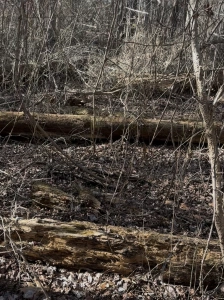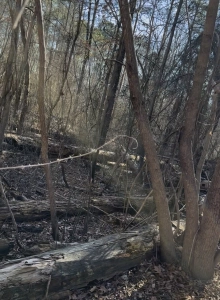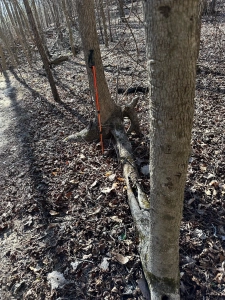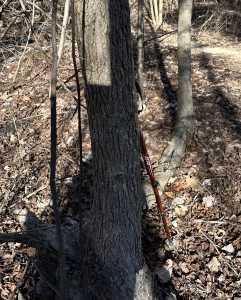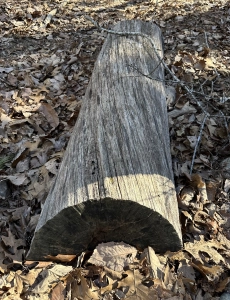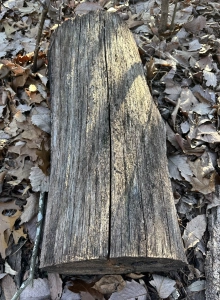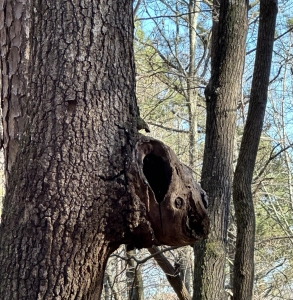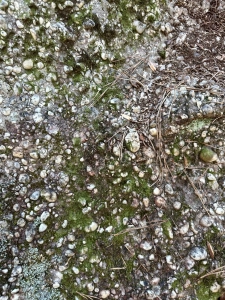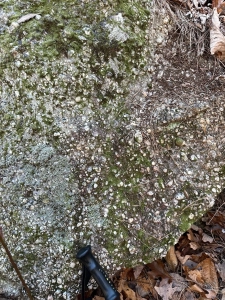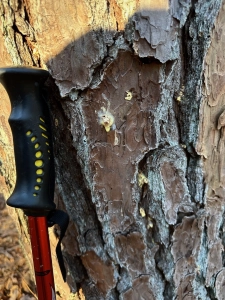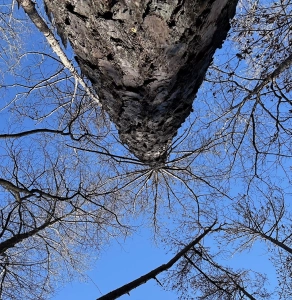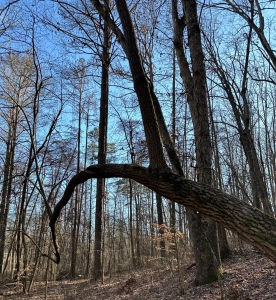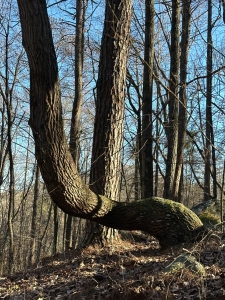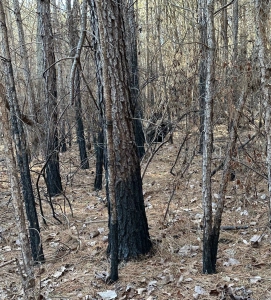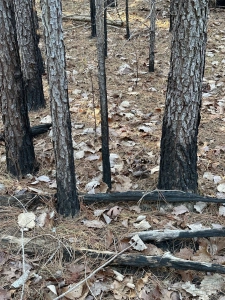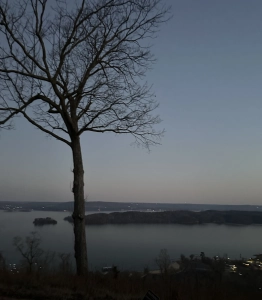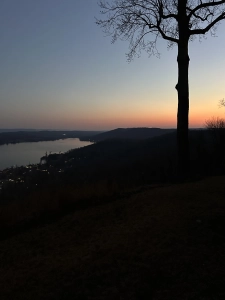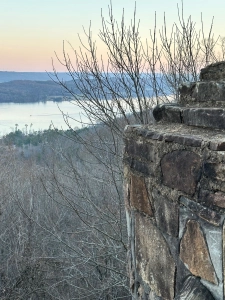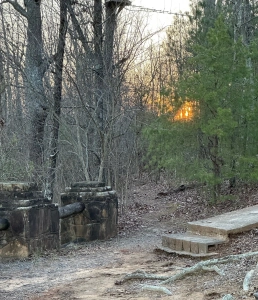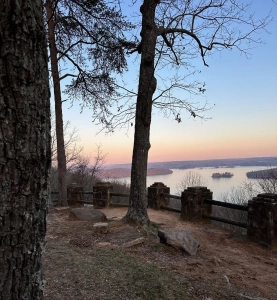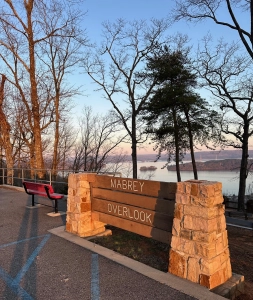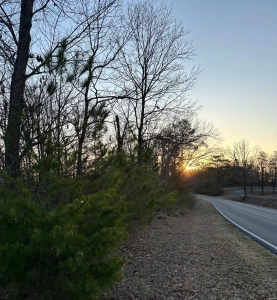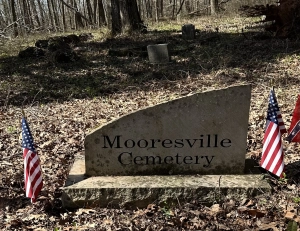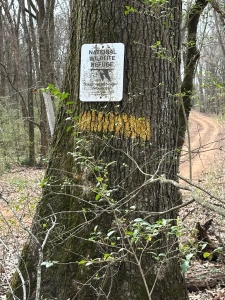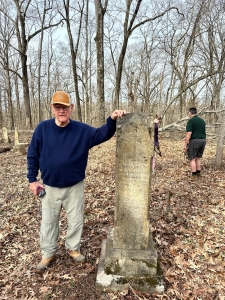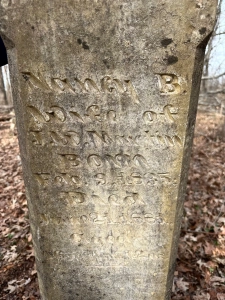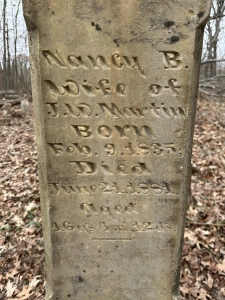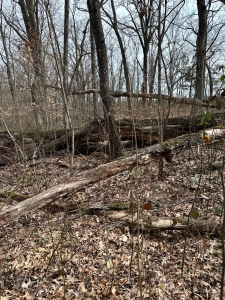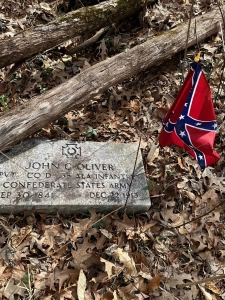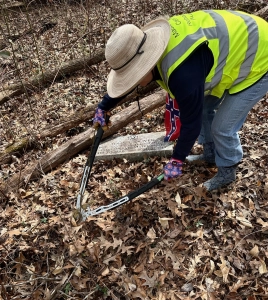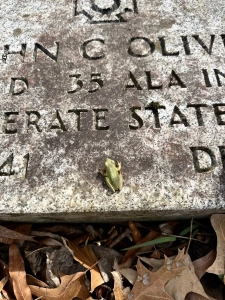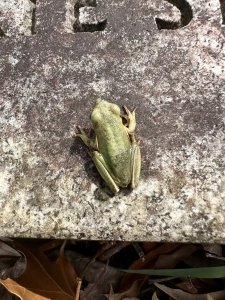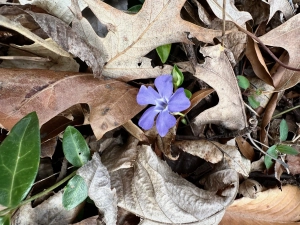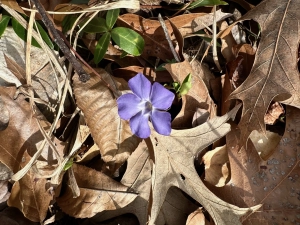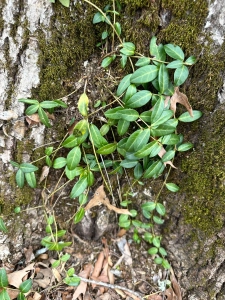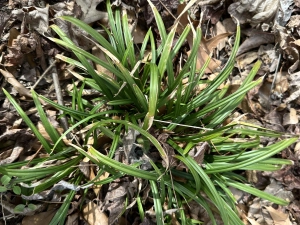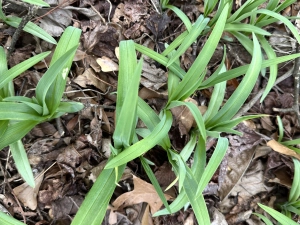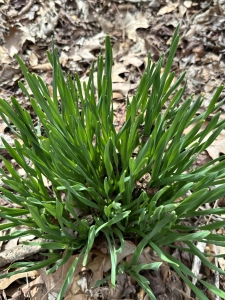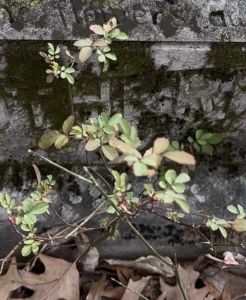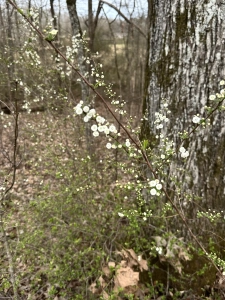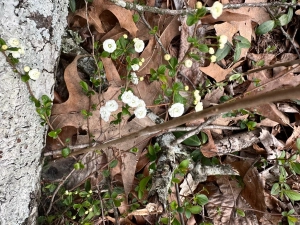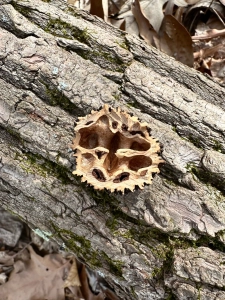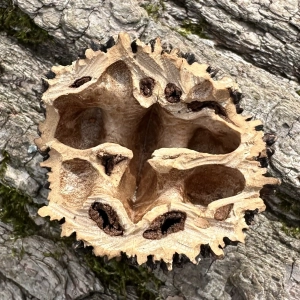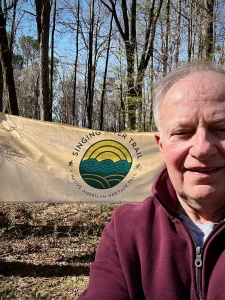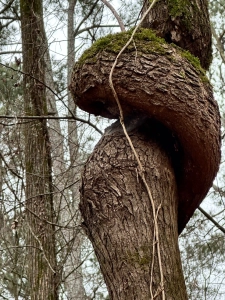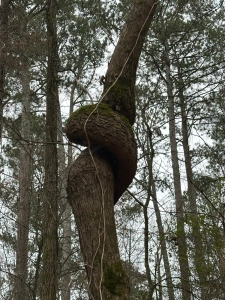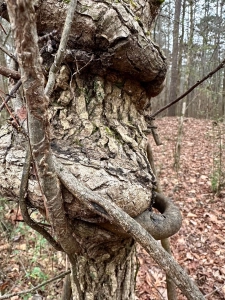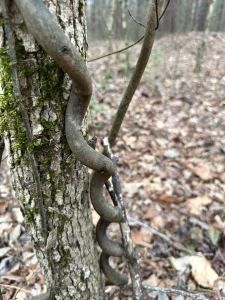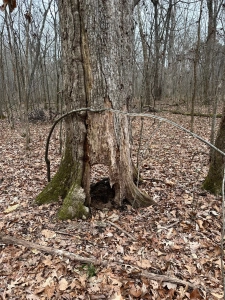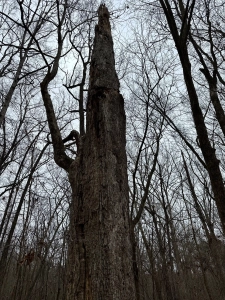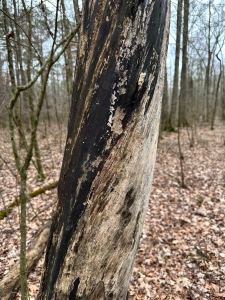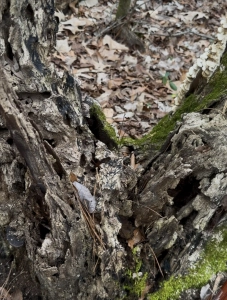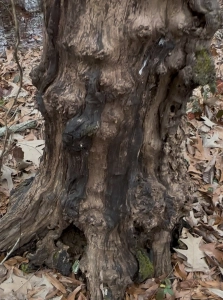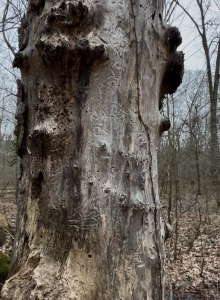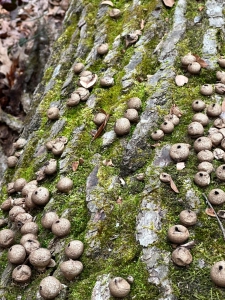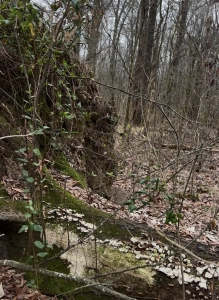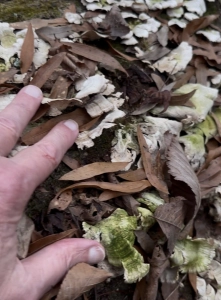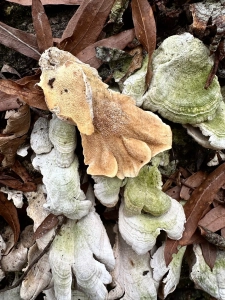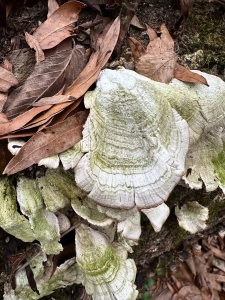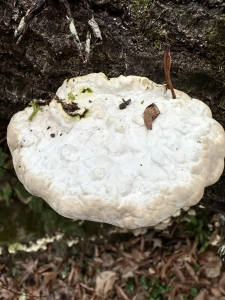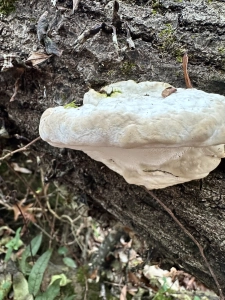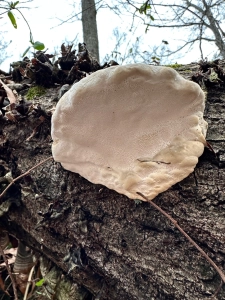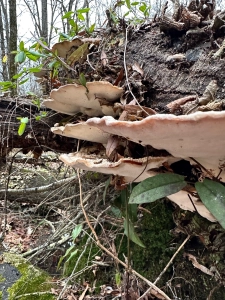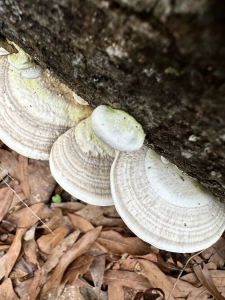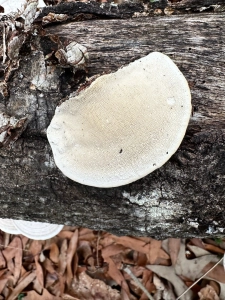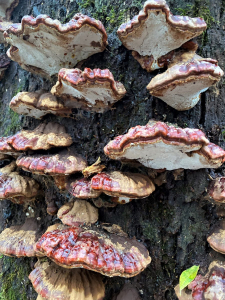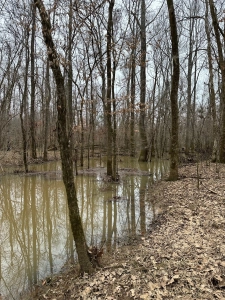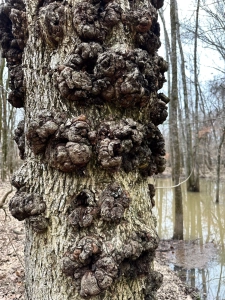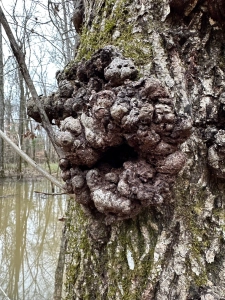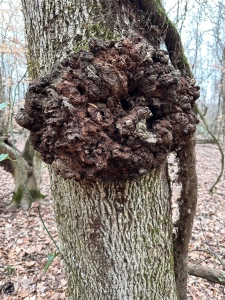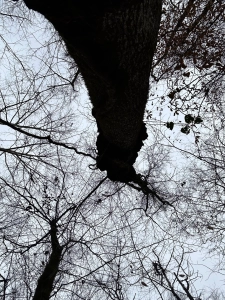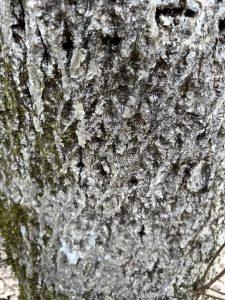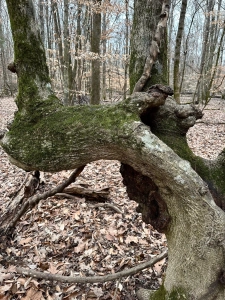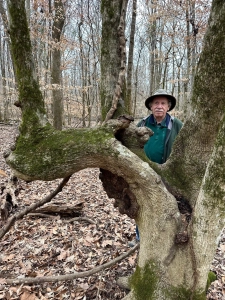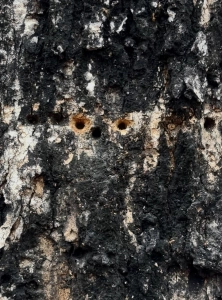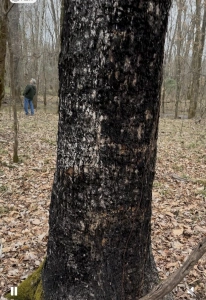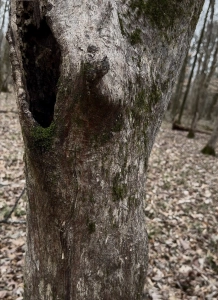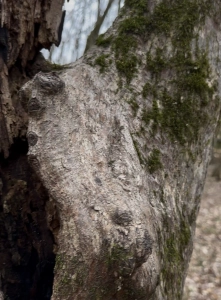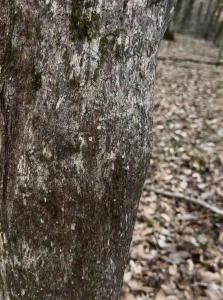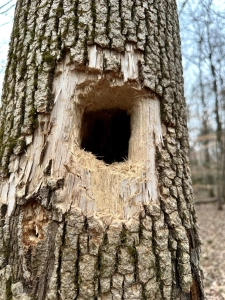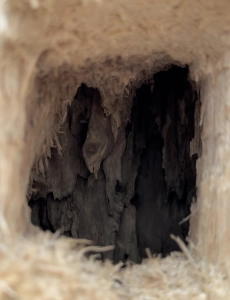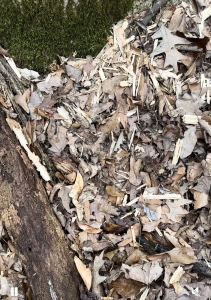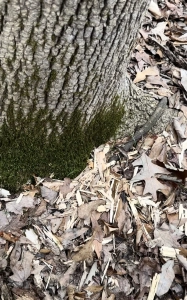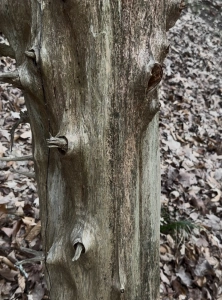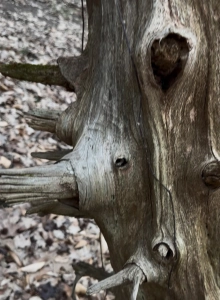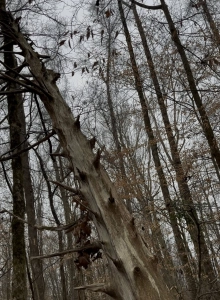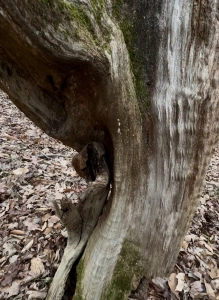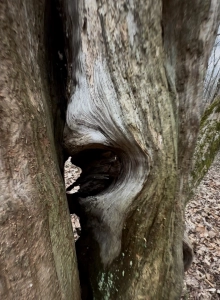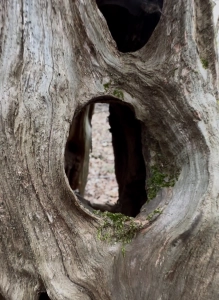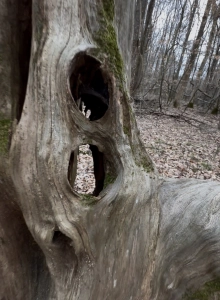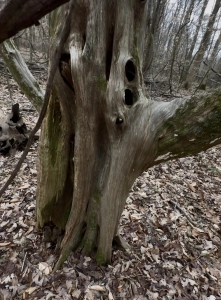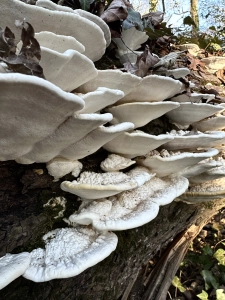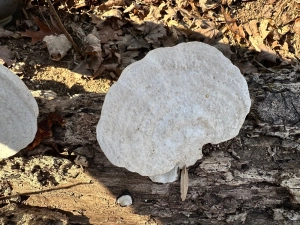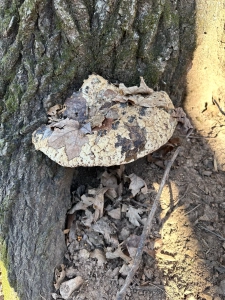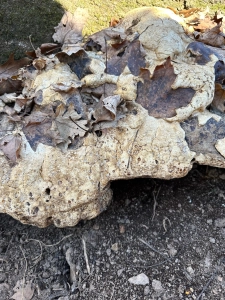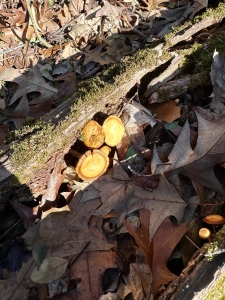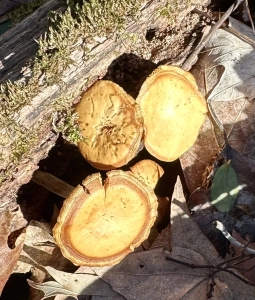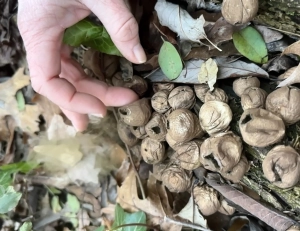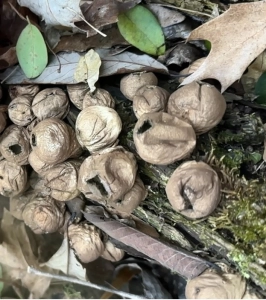Rainbow Mountain Loop–Refuting the 55-Year Claim of a Static Forest!
I intended this to be one of my brief-form posts, but I recorded too many short videos to meet my less-than-five-minutes-to-read criterion!
A colleague interested in our northern Alabama human and natural history recently observed that the forests on Madison, Alabama’s Rainbow Mountain Nature Preserve have not changed over the 55 years he has visited this North Alabama Land Trust property. I walked the Rainbolt Trail and circuited the Rainbow Mountain Loop Trail on April 29, 2025, snapping photos, recording brief videos, and assembling observations and reflections that tell the story of constant change within the forests of this residential-surrounded Nature Preserve. I invite him (and you) to accompany me on this photo essay trek. He and I later will find a time to saunter the trails.
A volunteer crew from Madison Greenways and Trails (I am an MG&T Board member) built the Rainbolt Trail. The group helps maintain all trails and polices the preserve for trash, graffiti, and other nuisances. Like so much of what the Land Trust does, volunteers do the heavy lifting at Rainbow Mountain.
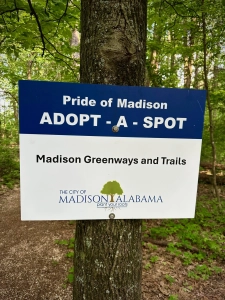
Mark Tercek, former CEO of The Nature Conservancy, characterizes Nature as infrastructure essential for ecosystem services (fresh air, purified water, wildlife habitat, recreation, aesthetics, etc.). I believe that Rainbow Mountain Nature Preserve is a necessary infrastructure complement to the City of Madison, Alabama. I express appreciation to the Land Trust of North Alabama and MG&T!
Nothing in Nature is Static
I parked at the Kensington Road trailhead of the Rainbolt Trail, which rises approximately 220 feet over its half-mile length on a WSW aspect (facing WSW). In our region of intense summer heat, slopes (particular convex-shaped) facing west to south (the souwest quadrant) are the least productive, i.e. of poorer site quality. Trees are shorter and living biomass per acre less. The forest along the Rainbolt Trail meets the poor site quality expectations. One does not see towering trees or dense stocking, nor do they sense a vibrant robust stand. Dead and downed woody debris carpets the forest floor. The two downed trees below are in a state of decomposition suggesting they’ve been on the ground no longer than 8-12 years. They occupied the living forest in 1970 (55 years ago), albeit as smaller and younger individuals. The forest is changing; nothing in Nature is static.
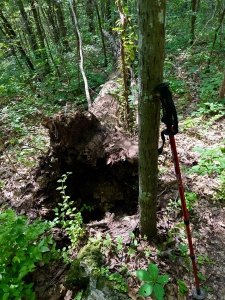
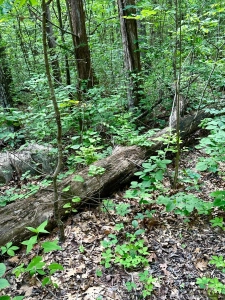
Still on the lower slope, I recorded this 58-second video — note that my narrative states the date as April 30 — take my word, the date on all videos in this post was April 29!
Life on these harsh low quality sites is of finite duration. The upturned stump below left likely toppled within the past dozen or so years. The standing dead oak below right died within the past three years. The decomposing bark clings to at least a third of the circumference, evidencing the tree’s near-term demise. I did not need to wander from the trail to find ample evidence of the ever-changing stand.
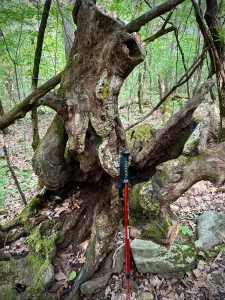
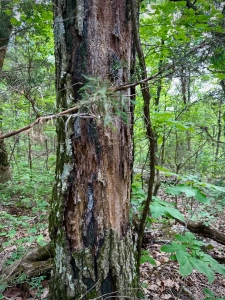
These trees fell within the past year. The action is continuous…maintaining an environmental and biological biomass constant. The living forest adds biomass through individual tree height and diameter growth and ingrowth of new recruits, which over the decades maintains equilibrium with living biomass loss through death, decay, and toppling.
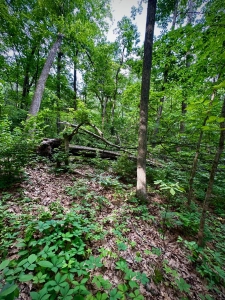
Fungi are living biomass dedicated to decay and decomposition, the chief architects of recycling carbon resources and reserves. Fifty-five years ago, fungi and other decomposers were hard at work on dead and down woody biomass that was present. A living forest then and a living forest today, static and unchanged to a layman walking the trails, but unendingly shifting and modifying to students of the art and technology of forestry, ecology, and environmental science. These luminescent panellus, a gilled polypore fungus, may be direct descendents of fungi decomposing oak when my friend walked the site 55 years ago!
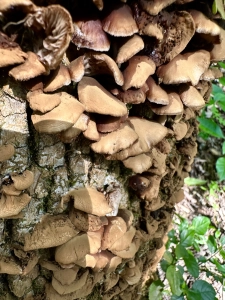
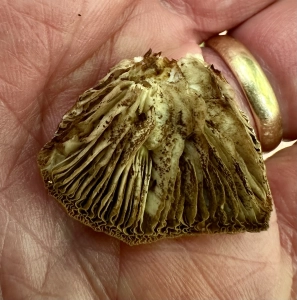
I ascended through midslope, still on the WSW facing slope, recording this 59-second video, revealing that every tree has a story to tell.
Another cedar tells me that disturbance has visited this domain routinely. Cedar demands full sunlight to regenerate. Firewood harvesting and periodic fire resulted from the past 200 years of European settlement. Native Americans nomadically occupying and farming the nearby bottomlands may have periodically burned the Rainbow Mountain highland to encourage berry production and enhance small game habitat.
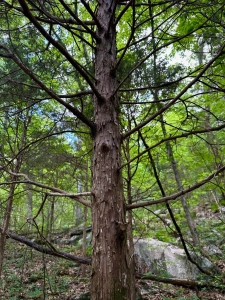
I recorded this 57-second tale of continuing disturbance on the upper slope.
This large cedar near the juncture with the topside Rainbow Mountain Loop Trail yielded to the ravages of a summer 2024 tempest. A wrenching gust shattered the trunk about 25 feet from the base. The top leans hopelessly (gravity will eventually prevail) against a sturdy tree downwind. The cedar’s rich green foliage has faded to brown. The forest carbon cycle knows no end. The cedar tree was in vigorous midlife when my friend wandered the mountain in 1970.
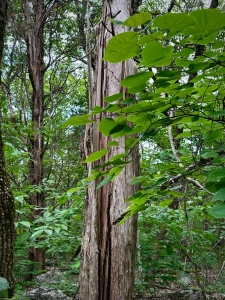
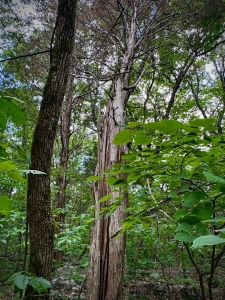
A nearby eastern red cedar escaped the wild wind. I recorded this 57-second video at the juncture of Rainbolt and Loop Trails.
Beyond the low quality Rainbolt slope forest, I encountered more diverse plant life along the Rainbow Loop Trail. You’ll note in my narrative for this 53-second video that I hesitated after mentioning poison ivy; I could not recall the name of an adjacent plant that resembles poison ivy. I knew that the neighbor is fragrant sumac, but the name was lost in a senior moment fog!
A Couple of Special Spring Ephemeral Treats
Woodland pinkroot is a spectacular spring ephemeral. Its red and yellow blooms are special visual treats.
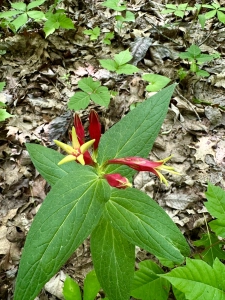
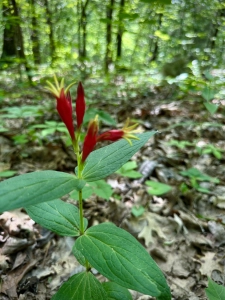
Purple phacelia is also among my spring favorites.
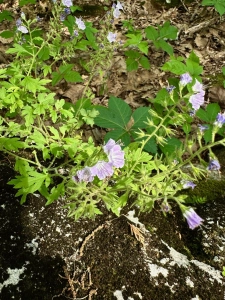
The lower eastside forest is a far different world and ecosystem from what I encountered on the poor site quality Rainbolt Trail. The woodland spring where I recorded this 58-second video rewards those making the circuit.
Along my personal and professional life journey, I somewhere picked up the term landscape amnesia (I believe from my reading years ago of Jared Diamond’s Collapse. It’s a condition that overtakes those who live long term in an area of great familiarity. Seeing the same location day after day, week after week, year after year can blind us to gradual, persistent change. An online source (Yeah, you caught me — its from Wikipedia!) described the condition:
Creeping normality (also called gradualism, or landscape amnesia) is a process by which a major change can be accepted as normal and acceptable if it happens gradually through small, often unnoticeable, increments of change. The change could otherwise be regarded as remarkable and objectionable if it took hold suddenly or in a short time span.
American scientist Jared Diamond used creeping normality in his 2005 book Collapse: How Societies Choose to Fail or Succeed. Prior to releasing his book, Diamond explored this theory while attempting to explain why, in the course of long-term environmental degradation, Easter Island natives would, seemingly irrationally, chop down the last tree:
“I suspect, though, that the disaster happened not with a bang but with a whimper. After all, there are those hundreds of abandoned statues to consider. The forest the islanders depended on for rollers and rope didn’t simply disappear one day—it vanished slowly, over decades.”
I forgive my friend for suffering a common afflection: creeping normality or landscape amnesia!
Thoughts and Reflections
I offer these observations:
- He who can no longer wonder and stand rapt in awe, is as good as dead, a snuffled-out candle. (Albert Einstein)
- The cycle of life is without end…as long as our sun shines, rain falls, and Earth remains otherwise inhabitable. (Steve Jones)
- Nothing in Nature is static, whether a mountain range or a northern Alabama upland forest. (Steve Jones)
- The Rainbow Mountain Nature Preserve is a necessary infrastructure complementing the City of Madison, Alabama. (Steve Jones)
Inhale and absorb Nature’s elixir. May Nature Inspire, Inform, and Reward you!
Note: Unless otherwise noted, all blog post images are created & photographed by Stephen B. Jones.
Please circulate images with photo credit: “©2025 Steve Jones, Great Blue Heron. All Rights Reserved.”
I am available for Nature-Inspired Speaking, Writing, and Consulting — contact me at steve.jones.0524@gmail.com
A reminder of my Personal and Professional Purpose, Passion, and Cause
If only more of us viewed our precious environment through the filters I employ. If only my mission and vision could be multiplied by untold orders of magnitude:
Mission: Employ writing and speaking to educate, inspire, and enable readers and listeners to understand, appreciate, and enjoy Nature… and accept and practice Earth Stewardship.
Vision:
- People of all ages will pay greater attention to and engage more regularly with Nature… and will accept and practice informed and responsible Earth Stewardship.
- They will see their relationship to our natural world with new eyes… and understand their Earth home more clearly.
Tagline/Motto: Steve (Great Blue Heron) encourages and seeks a better tomorrow through Nature-Inspired Living!
Steve’s Four Books
I wrote my books Nature Based Leadership (2016), Nature-Inspired Learning and Leading (2017), Weaned Seals and Snowy Summits: Stories of Passion for Place and Everyday Nature (2019; co-authored with Dr. Jennifer Wilhoit), and Dutton Land & Cattle: A Land Legacy Story (2025) to encourage all citizens to recognize and appreciate that every lesson for living, learning, serving, and leading is either written indelibly in or is powerfully inspired by Nature. All four of my books present compilations of personal experiences expressing my deep passion for Nature. All four books offer observations and reflections on my relationship with the natural world… and the broader implications for society. Order any from your local indie bookstore, or find them on IndieBound or other online sources such as Amazon and LifeRich.
I began writing books and Posts for several reasons:
- I love hiking and exploring Nature
- I see images I want to (and do) capture with my trusty iPhone camera
- I enjoy explaining those images — an educator at heart
- I don’t play golf!
- I do love writing — it’s the hobby I never needed when my career consumed me
- Judy suggested my writing is in large measure my legacy to our two kids, our five grandkids, and all the unborn generations beyond
- And finally, perhaps my books and Blogs could reach beyond family and touch a few other lives…sow some seeds for the future
